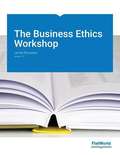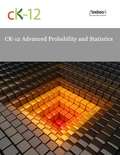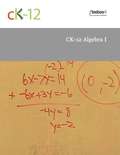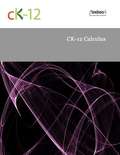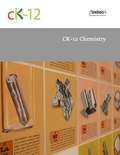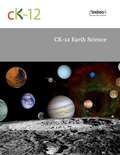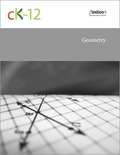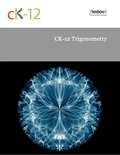- Table View
- List View
The Business Ethics Workshop v 1.0
by James BrusseauOn a good day in the business ethics classroom discussion charges forward; students have read the assigned case study, they’re engaged by the conflict and want to work through it. Then, there’s a bad day: students didn’t bother to do the reading and the hour sags listlessly. The key to going the first way is case studies that students want to read, and The Business Ethics Workshop by James Brusseau provides them with reality and engagement. Reality: No stilted and contrived stories about Steve Smith and Jane Jones. Excerpts from blogs and newspapers bring the weight—and provocation—of the world as it’s actually happening to the classroom.
The Business Ethics Workshop v 1.0
by James BrusseauOn a good day in the business ethics classroom discussion charges forward; students have read the assigned case study, they're engaged by the conflict and want to work through it. Then, there's a bad day: students didn't bother to do the reading and the hour sags listlessly. The key to going the first way is case studies that students want to read, and The Business Ethics Workshop by James Brusseau provides them with reality and engagement. Reality: No stilted and contrived stories about Steve Smith and Jane Jones. Excerpts from blogs and newspapers bring the weight--and provocation--of the world as it's actually happening to the classroom.
Business Fundamentals
by Global Text ProjectBusiness Fundamentals was developed by the Global Text Project, which is working to create open-content electronic textbooks that are freely available on the website http://globaltext.terry.uga.edu. Distribution is also possible via paper, CD, DVD, and via this collaboration, through Connexions. The goal is to make textbooks available to the many who cannot afford them. For more information on getting involved with the Global Text Project or Connexions email us at drexel@uga.edu and dcwill@cnx.org.
Business Information Systems: Design an App for That
by Raymond D. Frost Jacqueline C. Pike Lauren N. Kenyo Sarah E. PelsStudents in introductory Management Information Systems (MIS) courses often ask what a career in MIS looks like. Lacking a clear vision, they make their own assumptions. Often they assume the career involves programming with little human interaction. That MIS is a technical field could not be further from the truth. MIS job descriptions typically require candidates to be able to collaborate, communicate, analyze needs and gather requirements. They also list the need for excellent written and communication skills. In other words, MIS workers are constantly interacting with other people both inside and outside the organization. They are coming up with creative solutions to business problems. Business Information Systems by Frost, Pike, Kenyo and Pels is designed to help students get a feel for what a career in MIS would be like. The authors' students report that they learn more about information systems from their internships than from their IS courses. Consequently, they designed a book that looks very much like an internship--an introduction to the field followed by a substantial project. The authors begin Unit 1 by introducing the information systems landscape. The unit kicks off with a discussion of all the usual suspects: the information systems triangle, the systems development life cycle, transaction systems (ERP, SCM, CRM), collaboration systems, and business intelligence systems. Other aspects of the landscape such as usability, outsourcing, database concepts and so forth are introduced throughout a chapter in unit 2 where they fit in naturally with the flow of the project. Unit 2 is the substantial project which runs over a number of chapters. Students will plan, build, and develop a proposal for an iPhone application. They will develop a very realistic mockup. They also build a website to help market and support the app. Students are engaged because the project is fun and feels real. However, they are simultaneously learning business concepts and MIS skills. With Designing Information Systems, even as freshmen, you can give your students an experience that emulates MIS in operation. Business Information Systems: Design an App for That by Frost, Pike, Kenyo and Pels is a text that will help students learn Information Systems by doing Management Information Systems. Request a desk copy or examine the book online now to see how this text might work in your course or department.
Business Law and the Legal Environment
by Don Mayer Daniel M. Warner George J. Siedel Jethro K. LiebermanMayer, Warner, Siedel and Lieberman's Business Law and the Legal Environment is an up-to-date textbook with comprehensive coverage of legal and regulatory issues — and organized to permit instructors to tailor the materials to their particular approach. The authors take special care to engage students by relating law to everyday events with which they are already familiar with their clear, concise and readable style. Business Law and the Legal Environment provides students with context and essential concepts across the entire range of legal issues with which managers and business executives must grapple. The texts provide the vocabulary and legal acumen necessary for business people to talk in an educated way to their customers, employees, suppliers, government officials — and to their own lawyers.
Business Law and the Legal Environment: Executive MBA Edition
by Don Mayer Daniel M. Warner George J. Siedel Jethro K. LiebermanMayer, Warner, Siedel and Lieberman's Business Law and the Legal Environment (EMBA Edition) is an up-to-date textbook especially designed for students in EMBA programs. The text is organized to permit instructors to tailor the materials to their particular approach. The authors take special care to engage students by relating law to everyday events with their clear, concise and readable style. After introductory chapters covering the legal environment of business, Business Law and the Legal Environment (EMBA Edition) provides students with context and essential legal concepts relating to contracts, products liability, agency law, partnerships, corporations and government regulation. The text provides the vocabulary and legal savvy they will need to talk in an educated way to customers, suppliers, employees, creditors, shareholders, government regulators and other stakeholders — and to their own lawyers. With Business Law and the Legal Environment (EMBA Edition), the authors have created a text that not only has both case summaries and excerpted cases, but one that you can easily customize by deleting chapters, reordering the content, adding your own material, and even editing at the line level with Flat World's easy-to-use MIYO (Make It Your Own) Platform. The free online version of the text includes embedded links to law-related videos at YouTube and other online sites for easy access by students and instructors.
Business Law and the Legal Environment: Master of Accountancy Edition
by Don Mayer Daniel M. Warner George J. Siedel Jethro K. LiebermanMayer, Warner, Siedel and Lieberman's Business Law and the Legal Environment: MAcc Edition is an up-to-date textbook designed for students in Master of Accounting programs. The text is organized to permit instructors to tailor the materials to their particular approach. The authors take special care to engage students by relating law to everyday events with their clear, concise and readable style. After introductory chapters covering the legal environment of business, Business Law and the Legal Environment: MAcc Edition provides students with context and essential legal concepts that accounting professionals must understand, including contracts, sales, commercial paper, debtors and creditors rights, intellectual property, agency law, partnerships, corporations, and regulatory law. The text provides the vocabulary and legal savvy students will need when working in the accounting function or on engagements. With Business Law and the Legal Environment: MAcc Edition, the authors have created a text that not only has both case summaries and excerpted cases, but one that you can easily customize by deleting chapters, reordering the content, adding your own material, and even editing at the line level with Flat World's easy-to-use MIYO (Make It Your Own) Platform. The free online version of the text includes embedded links to law-related videos at YouTube and other online sites for easy access by students and instructors.
Business Law and the Legal Environment
by Don Mayer Daniel M. Warner George J. Siedel Jethro K. LiebermanMayer, Warner, Siedel and Lieberman's Business Law and the Legal Environment is an up-to-date textbook with comprehensive coverage of legal and regulatory issues -- and organized to permit instructors to tailor the materials to their particular approach. The authors take special care to engage students by relating law to everyday events with which they are already familiar with their clear, concise and readable style. Business Law and the Legal Environment provides students with context and essential concepts across the entire range of legal issues with which managers and business executives must grapple. The texts provide the vocabulary and legal acumen necessary for business people to talk in an educated way to their customers, employees, suppliers, government officials -- and to their own lawyers.
CK-12 21st Century Physics Flexbook: A Compilation of Contemporary and Emerging Technologies
by Ck-12 FoundationPhysics textbook
CK-12 Advanced Probability and Statistics
by Ck-12 FoundationCK-12 Foundation's Advanced Probability and Statistics FlexBook covers the following chapters: An Introduction to Analyzing Statistical Data - Students learn definitions of statistical terminology, and review data, measures of center, and measures of spread. Visualizations of Data - histograms and frequency distributions, common graphs and data plots, and box-and-whisker plots. An Introduction to Probability - events, sample spaces, probability, compound events, the complement of an event, conditional probability, and basic counting rules. Discrete Probability Distribution - random variables, probability distribution for a discrete random variable, mean and standard deviation of discrete random variables and the Binomial Probability Distribution. Normal Distribution - standard normal probability distribution, the density curve of the normal distribution, and applications of the normal distribution. Planning and Conducting an Experiment or Study - surveys, sampling and experimental design. Sampling Distributions and Estimations - sampling distributions and the Central Limit Theorem. Hypothesis Testing - The P-value, testing a proportion hypothesis, testing a mean hypothesis, and testing a hypothesis for dependent and independent samples. Regression and Correlation - scatterplots and linear correlation, Least-Squares regression, inferences about regression, and an introduction to multiple regression. Chi-Square- the Goodness-of-Fit test, test of independence, and testing one variance. Analysis of Variance and the F-Distribution - the F-Distribution and testing two variances, the One-Way ANOVA test, and the Two-Way ANOVA test. Non Parametric Statistics - nonparametric statistics, the rank sum test and rank Correlation, and the Kruskal-Wallis test.
CK-12 Advanced Probability and Statistics Second Edition Volume 1
by Ck-12 FoundationAn open source textbook.
CK-12 Algebra I
by Ck-12 FoundationCK-12 Foundation's Algebra FlexBook is an introduction to algebraic concepts for the high school student. Topics include: Equations & Functions, Real Numbers, Equations of Lines, Solving Systems of Equations & Quadratic Equations.
CK-12 Calculus
by Ck-12 FoundationCK-12 Foundation's Single Variable Calculus FlexBook covers the following chapters: Functions, Limits, and Continuity - A review of the basics of functions is given. Students use linear approximations to study the limit process, before a more formal treatment of limits is given. Differentiation - Students explore instantaneous rate of change, and the relationship between continuity and differentiability. The Chain Rule and implicit differentiation are reviewed. Applications of Derivatives - Students gain practice with using the derivatives in related rates problems. Additional topics include The First Derivative Test, The Second Derivative Test, limits at infinity, optimization, and approximation errors. Integration - This chapter includes indefinite integrals calculus, initial value problems, definite integrals, the Fundamental Theorem of Calculus, integration by substitution, and numerical integration. Applications of Integration - This chapter includes applications of the definite integral, such as calculating areas between two curves, volumes, length of curves, and other real-world applications in physics and statistics. Transcendental Functions - This chapter includes differentiation and integration of logarithmic and exponential functions, exponential growth and decay, derivatives and integrals involving inverse trigonometric functions, and L'Hospital's Rule. Integration Techniques - Students explore integration by substitution, integration by parts, integration by partial fractions, trigonometric integrals, trigonometric substitutions, and improper integrals. Infinite Series - This chapter introduces the study of sequences and infinite series. The properties presented describe the behavior of a sequence or series, including whether a sequence approaches a number or an infinite series adds to a number.
CK-12 Chemistry
by Ck-12 FoundationCK-12 Foundation's Chemistry FlexBook Covers the following chapters: The Science of Chemistry- scientific method, history, matter, energy. Chemistry: A Physical Science- measurement, formulas. Chemistry in the Laboratory- qualitative vs. quantitative observation. The Atomic Theory- atomic model from Dalton to Rutherford. The Bohr Model of the Atom- electromagnetic radiation, atomic spectra & Bohr model. Quantum Mechanics Model of the Atom- energy and standing waves, Heisenberg's uncertainty principle, Schrödinger's equation. Electron Configurations for Atoms- electron spin, Aufbau principle. Electron Configurations and the Periodic Table- relation of electron configuration to position on the periodic table. Relationships Between the Elements- chemical families from electron configuration; valence electrons, Lewis dot formulas. Trends on the Periodic Table- periodic trends: atomic size. Ions and the Compounds They Form- ionization, ionic bonding. Writing and Naming Ionic Formulas- predicting charge. Covalent Bonding- nature and naming of covalent bonds. Molecular Architecture- polar molecule, electronic/ molecular models of covalent molecules. Chemical Reactions- mass & mole calculations, reaction types. Mathematics and Chemical Equations- stoichiometry, heat of reaction. The Kinetic Molecular Theory- gas properties, combined and universal gas laws. The Liquid State- phase change. The Solid State- intermolecular forces. Solution Process- solvation, concentration, solubility, colligative properties. Ions in Solution- dissociation, electrolytes, non-electrolytes, ionic/ net-ionic equations. Chemical Kinetics- reaction rate. Chemical Equilibrium- reaction rates, equilibrium constant, Le Chatelier's principle, solubility product constant. Acids and Bases- strength of acids & bases, hydrolysis, pH. Water, pH, and Titration- dissociation of water, acid-base indicators, buffers. Thermodynamics- bond breaking and formation, heat of reaction and formation, Hess' law, entropy, Gibb's free energy. Electrochemistry- oxidation-reduction, electrochemical cells. Nuclear Chemistry- radioactivity, nuclear equations/ energy. Organic Chemistry- hydrocarbons, functional groups.
CK-12 Earth Science
by Ck-12 FoundationCK-12 Foundation's Earth Science FlexBook Covers the following chapters: What is Earth Science- scientific method and branches of earth science. Studying Earth's Surface- landforms, map projections and computers/satellites. Earth's Minerals- types, formation, identification , properties and uses. Rocks- rock cycle and types of rocks. Earth's Energy- renewable and nonrenewable resources. Plate Tectonics- Earth's interior, continental drift, seafloor spreading, tectonic movement, plate boundaries, and landforms. Earthquakes- causes, prediction, safety, seismic waves/tsunamis, and rock/mountain building. Volcanoes- formation, landforms and types of magma and eruptions. Weathering and Formation of Soil- mechanical/chemical weathering and soil formation, horizions & climates. Erosion and Deposition- actions of water, wind and gravity. Evidence about the Earth's Past- fossilization and relative/absolute dating. Earth's History- geological time, early history and evolution. Earth's Freshwater- water cycle and lakes, rivers, streams & groundwater. Earth's Oceans- formation, composition, waves/tides, seafloor and ocean life. Earth's Atmosphere- properties, significance, layers, transfer of energy and movement of air. Weather- cloud types, air movement, storms, and forecasting. Climate- factors that affect climate, different climates, and global climate change. Ecosystems and Human Population- role, flow of matter/energy, carbon cycle and effect of human population growth. Human Actions and the Land- erosion and pollution. Human Actions and the Earth's Resources- renewable vs. nonrenewable and conservation & availability. Human Actions and the Earth's Water- usage, distribution, sources, pollution, and protection. Human Action and the Atmosphere- types, causes, effects and reductionObserving and Exploring Space- electromagnetic radiation, telescopes, and current discoveriesEarth, Moon and Sun- properties, motion, tides/eclipses, sun layers and solar activityThe Solar System- motion, formation, inner vs. outer planets, dwarf planets, meteors, asteroids, and comets. Stars, Galaxies and the Universe- constellations, light/energy of stars, classification, evolution, galaxies, dark matter, dark energy, and the Big Bang Theory.
CK-12 Geometry
by Ck-12 FoundationCK-12 Foundation's Geometry FlexBook covers the following chapters: Basics of Geometry - undefined terms, defined terms, basic postulates of points, lines and planes; distances on a coordinate grid; complementary and supplementary angles; vertical angles; linear pairs and classification of polygons. Reasoning and Proof - inductive reasoning, deductive reasoning, conditional statements, properties of equality and two-column proofs. Parallel and Perpendicular Lines - the parallel line postulate, the perpendicular line postulate, and angles formed by two parallel lines and a non-perpendicular transversal. Congruent Triangles - the Triangle Sum theorem, triangle congruence, the SSS and ASA postulates, the AAS congruence theorem, two-column and flow proofs, the HL congruence theorem, AAA and SSA relationships, isosceles and equilateral triangles. Relationships Within Triangles - the midsegment theorem, the perpendicular bisector theorem, the angle bisector theorem, the concurrency of medians theorem, Napoleon's theorem, and the triangle inequality theorems. Quadrilaterals - interior angles of convex quadrilaterals, classifying quadrilaterals, properties of parallelograms, properties of rhombi, rectangles and squares, and properties of trapezoids. Similarity - ratio and proportion, properties of similar polygons, AAA and AA rules for similar triangles, using SSS and SAS to solve problems about similar triangles, identifying proportional segments in triangles and similarity transformations. Right Triangle Trigonometry - using the Pythagorean theorem when working with right triangles, classification of triangles, the converse of the Pythagorean theorem, using the geometric mean, properties of special right triangles, and trigonometric ratios. Circles - relationships between congruent and similar circles, the equation of a circle, tangent lines, arc measures, chords, inscribed angles, and angles formed by chords, secants and tangents. Perimeter and Area - finding the area of polygons, using scale drawings or models, finding the circumference of a circle, areas of circles and sectors, calculating the areas and perimeters of regular polygons and geometric probability. Transformations - transformations of figures in two-dimensional space including translations, reflections, rotations and dilations.
CK-12 Life Science
by Ck-12 FoundationCK-12 Foundation's Life Science FlexBook Covers the following chapters:Studying Life- Nature of science: scientific method. tools used in science and safety in research. Introduction to Living Organisms- what they are, what they are made of, and classification. Introduces carbs, lipids, proteins, and nucleic acids. Cells and Their Structures- what they are, what they are made of, organelles and eukaryotic vs. prokaryotic. Cell Functions- ctive transport, passive transport, photosynthesis, and cellular respirationCell Division, Reproduction, and DNA- mitosis, meiosis, DNA, RNA, and protein synthesisGenetics- Mendel's peas to gene therapy. Evolution- Darwin's natural selection, history of life and evidence of evolution. Prokaryotes- properties and characteristicsProtists and Fungi- properties, characteristics, reproduction and metabolismPlants- nonvascular & vascular, gymnosperms & amniosperms and hormones/tropismsIntroduction to Invertebrates- sponges, cnidarians, and wormsOther Invertebrates- mollusks, echinoderms, arthropods, and insectsFishes, Amphibians, and Reptiles- fishes, amphibians, and reptilesBirds and Mammals- characteristics, properties, diversity and significanceBehavior of Animals- communication, cooperation, mating and cyclesSkin, Bones, and Muscles- skeletal, muscular and integumentary systemsFood and the Digestive System- nutrition and digestionCardiovascular System- heart, blood, vessels and cardiovascular healthRespiratory and Excratory Systems- breathing and elimination of wasteControlling the Body- Nervous SystemDiseases and the Body's Defenses- Diseases and the immune responseReproductive System and Life Stages- Reproduction, fertilization, development and healthFrom Populations to the Biosphere- Ecology: Communities, ecosystems, biotic vs. abiotic factors, and biomesEcosystem Dynamics- Flow of energy, recyclig of matter, and ecosystem changeEnvironmental Problems- Pollution, renewable vs nonrenewable resources, habitat destruction & extinction, and biodiversity
CK-12 Trigonometry
by Ck-12 FoundationCK-12 Foundation's Trigonometry FlexBook covers the following chapters: Trigonometry and Right Angles - introduction to the trigonometric functions. Circular Functions - introduction to radian measure, circular functions and periodic functions. Trigonometric Identities - confirm, verify and derive various trigonometric identities. Inverse Functions and Trigonometric Equations - inverse functions to trigonometric functions, and will apply the domain, range and quadrants of the six inverse trigonometric functions to evaluate expressions. Triangles and Vectors - introduction to vectors and vector applications. Polar Equations and Complex Numbers - plot points in a polar coordinate system, graph and recognize limaçons and cardiods, and work with real-world applications involving polar coordinates and polar equations.
Collaborative Statistics
by Barbara Illowsky Susan DeanCollaborative Statistics was written by Barbara Illowsky and Susan Dean, faculty members at De Anza College in Cupertino, California. The textbook was developed over several years and has been used in regular and honors-level classroom settings and in distance learning classes. This textbook is intended for introductory statistics courses being taken by students at two- and four-year colleges who are majoring in fields other than math or engineering. Intermediate algebra is the only prerequisite. The book focuses on applications of statistical knowledge rather than the theory behind it.
College Physics
by OpenStaxThis introductory, algebra-based, two-semester college physics book is grounded with real-world examples, illustrations, and explanations to help students grasp key, fundamental physics concepts. This online, fully editable and customizable title includes learning objectives, concept questions, links to labs and simulations, and ample practice opportunities to solve traditional physics application problems.
College Success
by Bruce Beiderwell Linda Tse Thomas J. Lochhaas Nicholas B. DekanterCollege Success takes a fresh look at what it means, in today's world, with today's students, to be successful in college. Although many of the topics included--from study skills to personal health, from test-taking to managing time and money--will look familiar to those who have used student success texts that have been around for many editions, College Success takes a new approach. The focus is on realistic, practical tools for the students who need them. This is a book designed, frankly, for students who may have difficulty with traditional college texts. The style is direct and to the point. Information is presented concisely and as simply as possible. This is not a weighty tome that discusses student success--this is a manual for doing it. College student demographics have changed considerably in recent decades. More than a third of all students enroll not directly from high school but after a delay of some years. More students are working and have families. More students come from varied ethnic and cultural backgrounds. More students are the first in their family to attend college. More students have grown up with electronic media and now read and think in ways different from the previous generation. With these and so many other cultural changes, more students are not well prepared for a college education with the study skills and life skills they need to become successful students. For each student to get the most out of College Success and their college experience they must understand who they are as it relates to college. To that end, in every chapter students explore themselves, because success starts with recognizing your own strengths and weaknesses. Students make their own goals based on this self-assessment, determining what success in college really means for them as individuals. Interactive activities then help students learn the choices available to them and the possibilities for improving their skills. Skills are presented in step-by-step processes, tips for success in manageable highlighted displays. Most important, students always see the value of what they are reading--and how they can begin to apply it immediately in their own lives. College Success is intended for use in Freshmen Orientation, Study Skills or Student Success courses. A 2009 study revealed that currently nationwide, 34% of college freshmen do not return to their college for their sophomore year. This book is designed to help change that.
Communication in the Real World
by Richard G. Jones Jr.Communication in the Real World: An Introduction to Communication Studies by Richard G. Jones, Jr. overviews the time-tested conceptual foundations of the field, while incorporating the latest research and cutting-edge applications of these basics. Each chapter will include timely, concrete, and real-life examples of communication concepts in action. A key feature of this book is the integration of content regarding diversity and organizational communication in each chapter through examples and/or discrete sub-sections. Discussions of diversity are not relegated to feature boxes. Also integrated into the content are examples that are inclusive in terms of race, gender, sexuality, ability, age, marital status, religion, and other diverse identity characteristics.
